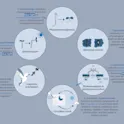
Life sciences
27 Oct 2020
Decrypting the Cryptochrome with Margaret Ahmad and Brian Crane
New article collection to showcase research on the cryptochrome, a blue light receptor first discovered in plants.

Life sciences
27 Oct 2020
New article collection to showcase research on the cryptochrome, a blue light receptor first discovered in plants.
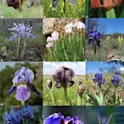
Featured news
13 Oct 2020
What did the last common ancestor of irises look like? Frontiers in Plant Science

Environment
20 Aug 2020
Glycerol protects algae in Antarctica from extreme conditions: Frontiers in Plant Science

Top news
30 Apr 2020
A dedicated research platform to focus on plant interactions with beneficial mutualistic and endophytic organisms.

Featured news
16 Oct 2019
Machine learning algorithms developed to select high-yield food crops could be applied to ‘hyperspectral analysis’ in other disciplines, from astronomy to espionage; Frontiers in Plant Science

Featured news
28 Aug 2019
The wild apples in the Tien Shan Mountains represent the main ancestral population for our modern apple. These trees produce large fruits, which are often red when ripe and have a varying array of flavors. These were the ancestors of the trees that people first started to cultivate and spread along the Silk Road. Image: Shutterstock. Apples originally evolved in the wild to entice ancient megafauna to disperse their seeds; more recently, humans began spreading the trees along the Silk Road with other familiar crops; dispersing the apple trees led to their domestication — by Max Planck Institute for the Science of Human History Recent archaeological finds of ancient preserved apple seeds across Europe and West Asia combined with historical, paleontological, and recently published genetic data are presenting a fascinating new narrative for one of our most familiar fruits. In this study, Robert Spengler of the Max Planck Institute for the Science of Human History traces the history of the apple from its wild origins, noting that it was originally spread by ancient megafauna and later as a process of trade along the Silk Road. These processes allowed for the development of the varieties that we know today. Origins of […]

Featured news
14 Mar 2019
Intercropping with grasses is an effective and sustainable alternative to chemical treatments for maximizing blueberry yield and antioxidant content in limey soils; Frontiers in Plant Science

Featured news
11 Mar 2019
Spraying crops with the tomato compound hexenyl butyrate could be a cheap, safe and straightforward means to prevent bacterial infection and improve drought tolerance; Frontiers in Plant Science

Frontiers news
31 Oct 2018
Chief Editors Jim Leebens-Mack and Gerald Schneeweiss launch new specialty on Plant Systematics and Evolution in Frontiers in Plant Science
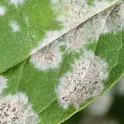
Featured news
17 Oct 2018
The finding could help with efforts to develop disease resistance against fungal infections and other plant pathogens: Frontiers in Plant Science
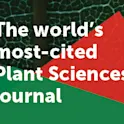
Impact analysis
03 Jul 2018
With an Impact Factor of 3.678, Frontiers in Plant Science is the most-cited journal in its field
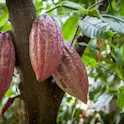
Featured news
25 May 2018
The powerful gene-editing tool CRISPR-Cas9 could help breed cacao trees with desirable traits such as enhanced resistance to diseases: Frontiers in Plant Sciences
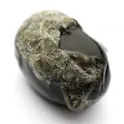
Featured news
09 Feb 2018
Research explores largest olive anthracnose epidemic recorded in decades and prompt more intensive research into this pathogen: Frontiers in Plant Science

Featured news
15 Dec 2017
2,100+ articles published this year, from 12,200+ authors
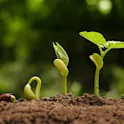
Life sciences
16 Oct 2017
Speeding up the slowest part of photosynthesis to increase plant yield doesn’t work in practice, finds a study in Frontiers in Plant Science
Get the latest research updates, subscribe to our newsletter